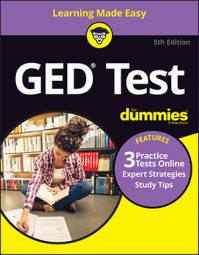As you'll see in the following practice questions, if you run into a reading passage or question that seems intimidating, don't panic: in the case of a reading passage, the answers will always be found somewhere in the text. And if you're still not sure, you can always eliminate the obviously wrong answers and use some common sense to choose from the remaining ones.
Practice questions
Questions 1 and 2 refer to the following excerpt from the U.S. Embassy's IIP Digital website.Democracies fall into two basic categories, direct and representative. In a direct democracy, citizens, without the intermediary of elected or appointed officials, can participate in making public decisions. Such a system is clearly most practical with relatively small numbers of people — in a community organization, tribal council, or the local unit of a labor union, for example — where members can meet in a single room to discuss issues and arrive at decisions by consensus or majority vote.Some U.S. states, in addition, place "propositions" and "referenda" — mandated changes of law — or possible recall of elected officials on ballots during state elections. These practices are forms of direct democracy, expressing the will of a large population. Many practices may have elements of direct democracy. In Switzerland, many important political decisions on issues, including public health, energy, and employment, are subject to a vote by the country's citizens. And some might argue that the Internet is creating new forms of direct democracy, as it empowers political groups to raise money for their causes by appealing directly to like-minded citizens.
However, today, as in the past, the most common form of democracy, whether for a town of 50,000 or a nation of 50 million, is representative democracy, in which citizens elect officials to make political decisions, formulate laws, and administer programs for the public good.
- The federal government of the United States is an example of
(direct democracy or representative democracy).
- One example of allowing the population as a whole to vote on an issue in America would be
A. a recall election B. election of a local mayor C. the election of the president D. a school board election
Answers and explanations
- The correct answer is representative democracy.
In America, citizens elect officials, from state representatives to federal senators, who represent the interests of individual citizens in the administration of the country.
- The correct answer is Choice (A).
Choices (B), (C), and (D) are all examples of indirect or representative democracy, where someone is elected to represent the voter. For example, mayors, who citizens elect directly, are in office to represent them. The voters don't make political decisions; the mayor in council does. Only in recall elections is the voters' voice directly applied to a decision.

